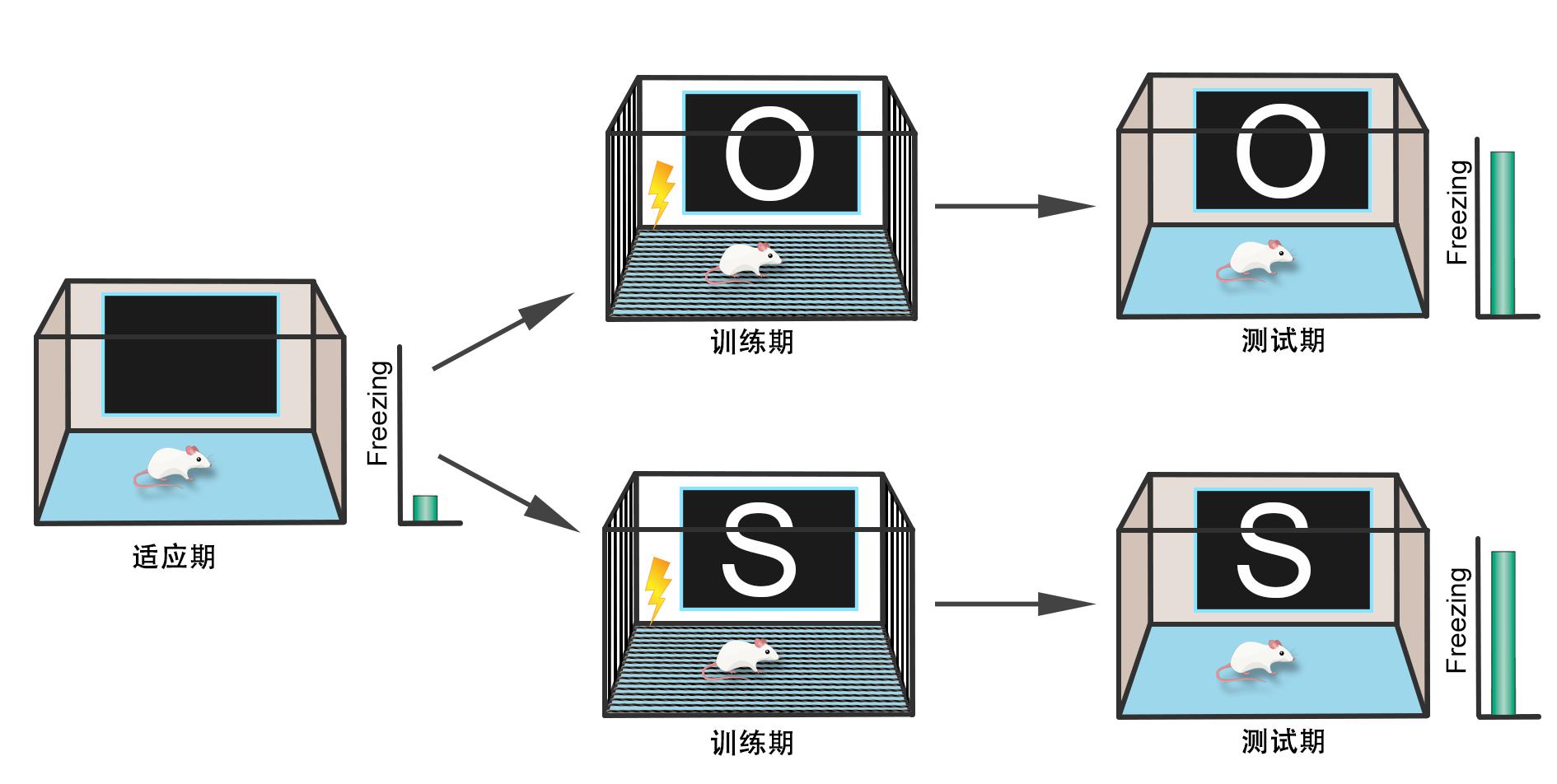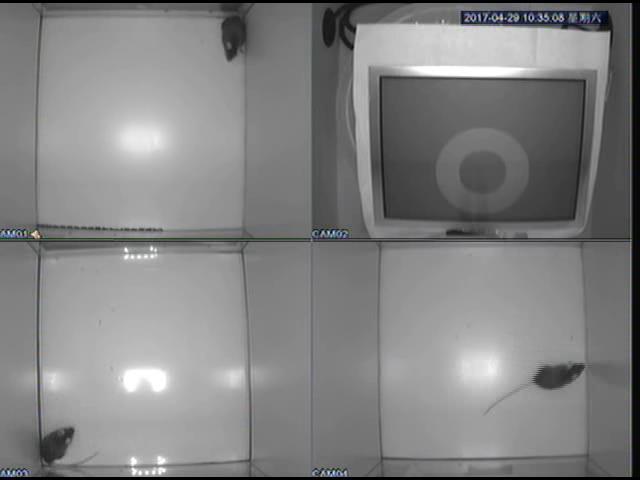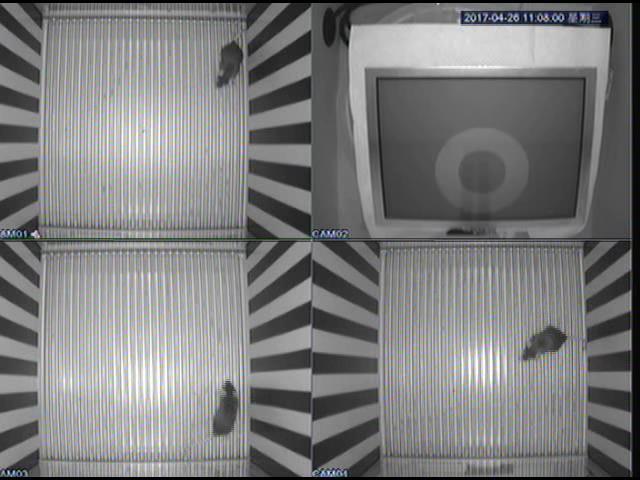精神分裂症(Schizophrenia)是一种严重的精神疾患。其特征是患者出现语言混乱、行为异常,以及不能理解真实世界。常见的症状包括错误信念(false beliefs)、混乱的思维、妄想、幻觉、幻听、社会参与和情绪表达的程度减少。
“Schizophrenia”一词可以直译作“分裂的心智”,它的希腊词根是schizein(撕裂)和phren(心智)[1],中国大陆、台湾和香港的该疾病名称“精神分裂症”皆是直译而来[2]。布鲁勒于1908年第一次提出了这个概念,用来描述人格、思想、记忆、知觉之间的功能分离。
一般认为精神分裂症有“4A”症状:情绪淡然(flattened Affect)、自闭(Autism)、联想障碍(impaired Association)、情感矛盾(Ambivalence)[3][4]。精神分裂症花费了庞大的人力和经济成本[5]。它会使患者的预期寿命降低10-25年[6]。精神分裂症是身心障碍的主要原因之一,是排在瘫痪和痴呆症之后第三位的身心障碍[7]。
精神分裂症的病理机制不明。现有的主流研究之一认为N-甲基-D-天冬氨酸受体(N-methyl-D-aspartic acid receptor,NMDA受体)在精神分裂症患者中减少。大量研究中NMDA受体的表达减少和NMDA受体阻滞剂的运用能够模拟精神分裂症的症状及与其有关的病理异常[8][9][10]。
苯环利定(phencyclidine,PCP)是NMDA受体阻滞剂,其被广泛运用于的精神分裂症的科学研究之中。我们腹腔注射PCP,建立类精神分裂症小鼠模型,然后通过建立基于视觉的条件性恐惧实验范式(图1),检测类精神分裂症实验小鼠所产生的freezing(僵直/冻结),确认类精神分裂症实验小鼠产生恐惧(图2),同时使用光学手段对TRPC3/TRPC6二种蛋白进行病理学检测,从而揭示精神分裂症小鼠中TRPC3/TRPC6二种蛋白与视觉恐惧具有相关性。

图1 基于视觉的条件性恐惧实验范式模式图


图2 类精神分裂症实验小鼠产生恐惧实景图
参考文献:
-
Kuhn R. tr. Cahn CH. Eugen Bleuler's concepts of psychopathology. History of Psychiatry. 2004, 15 (3): 361–6
-
黄敏伟. Schizophrenia中文诊断名称意见调查说明。台湾精神医学会。
-
Stotz-Ingenlath G. Epistemological aspects of Eugen Bleuler's conception of schizophrenia in 1911. Medicine, Health Care and Philosophy. 2000, 3 (2): 153–9
-
McNally K. Eugen Bleuler's "Four A's". History of Psychology. 2009, 12 (2): 43–59.
-
van Os J, Kapur S. Schizophrenia . Lancet. 2009-08, 374 (9690): 635
-
Laursen TM, Munk-Olsen T, Vestergaard M. Life expectancy and cardiovascular mortality in persons with schizophrenia. Current opinion in psychiatry. 2012-03, 25 (2): 83
-
Ustün TB, Rehm J, Chatterji S, Saxena S, Trotter R, Room R, Bickenbach J. Multiple-informant ranking of the disabling effects of different health conditions in 14 countries. The Lancet. 1999, 354 (9173): 111–15.
-
Catts VS, Lai YL, Weickert CS, Weickert TW, Catts SV. A quantitative review of the post-mortem evidence for decreased cortical N-methyl-D-aspartate receptor expression levels in schizophrenia: How can we link molecular abnormalities to mismatch negativity deficits?. Biological Psychology. 2016, 116: 57–67
-
Michie PT, Malmierca MS, Harms L, Todd J. The neurobiology of MMN and implications for schizophrenia. Biological Psychology. 2016, 116: 90–7.
-
Pratt J, Dawson N, Morris BJ, Grent-'t-Jong T, Roux F, Uhlhaas PJ. Thalamo-cortical communication, glutamatergic neurotransmission and neural oscillations: A unique window into the origins of ScZ?. Schizophrenia Research. 2017, 180: 4–12.
|